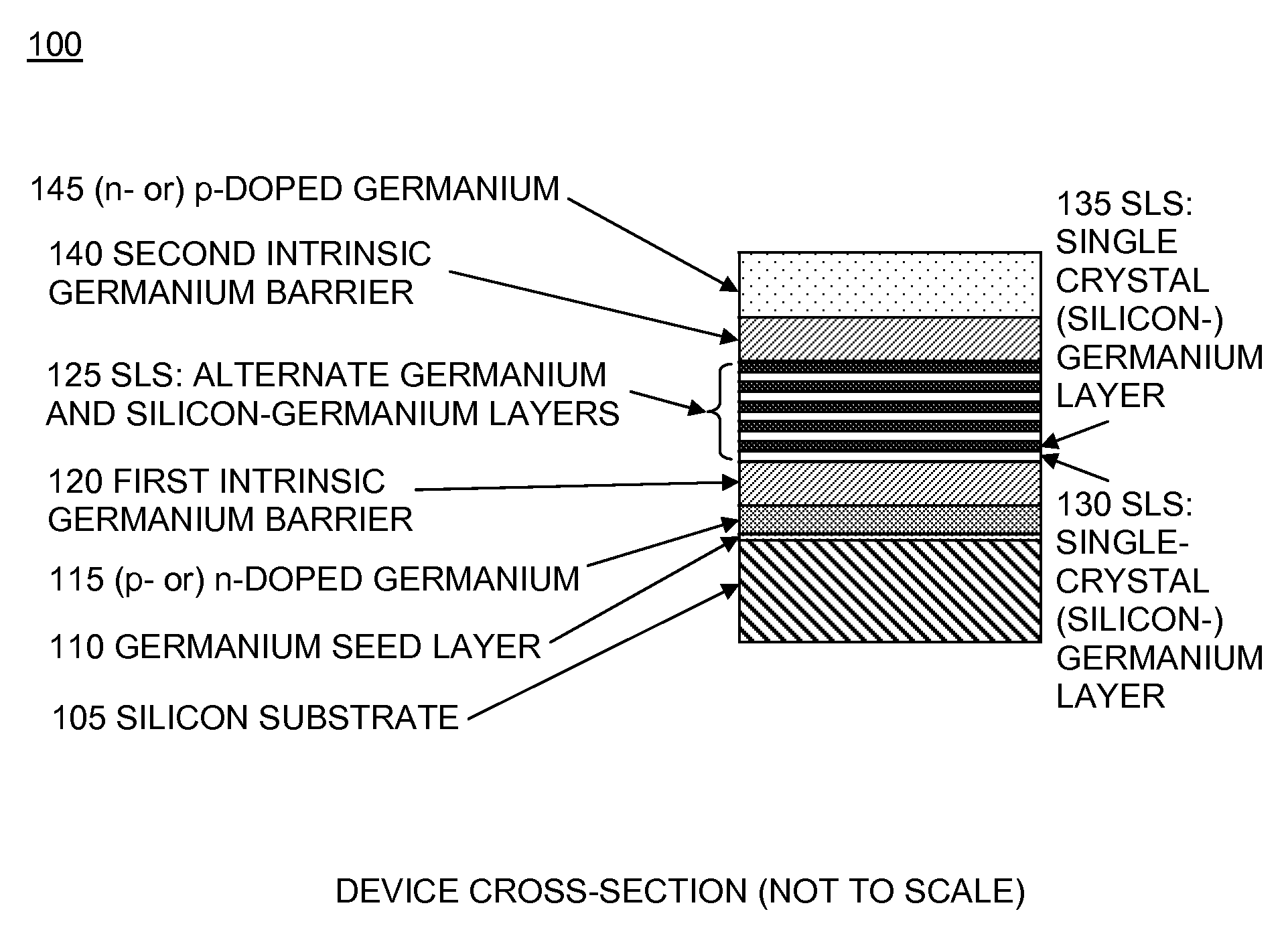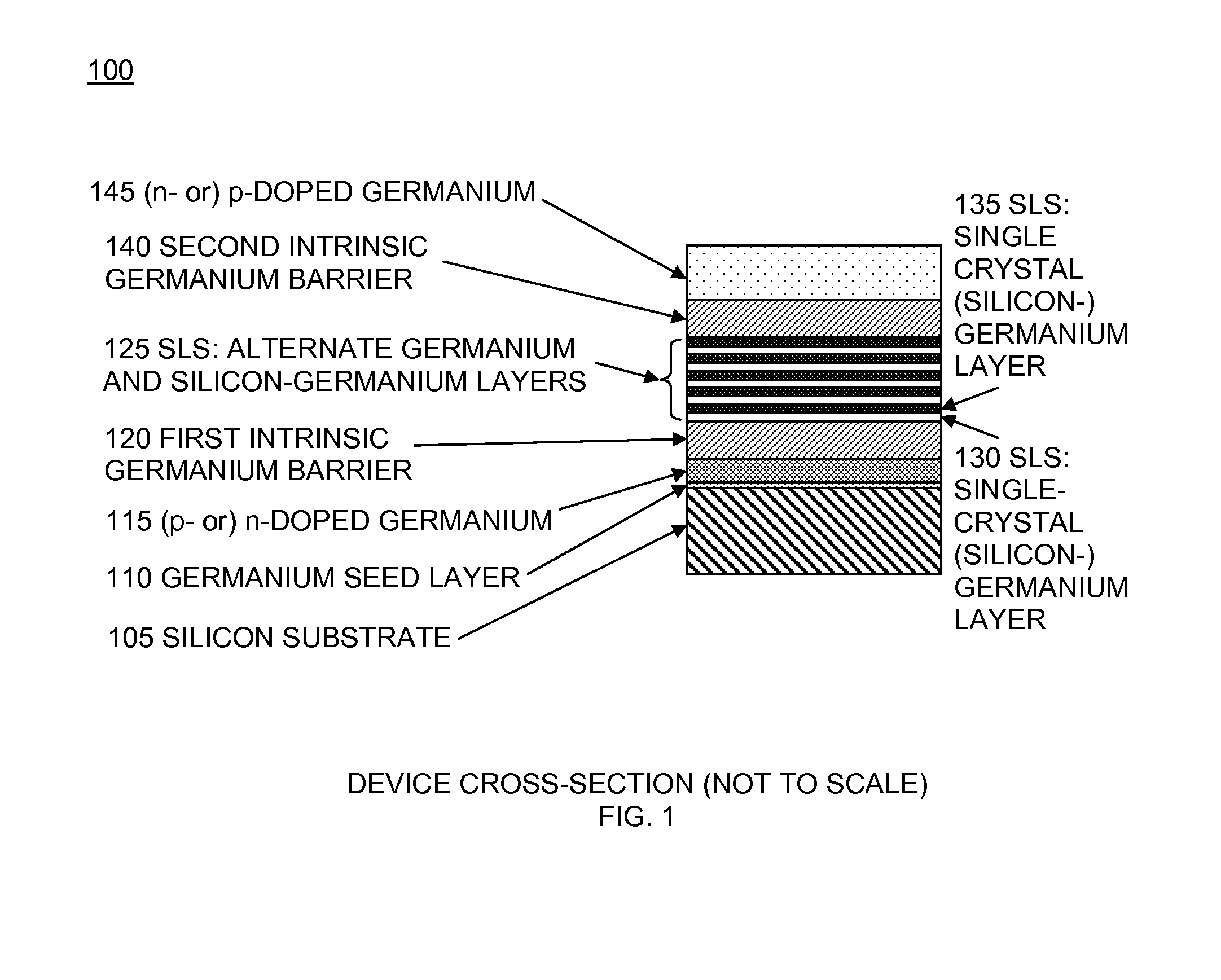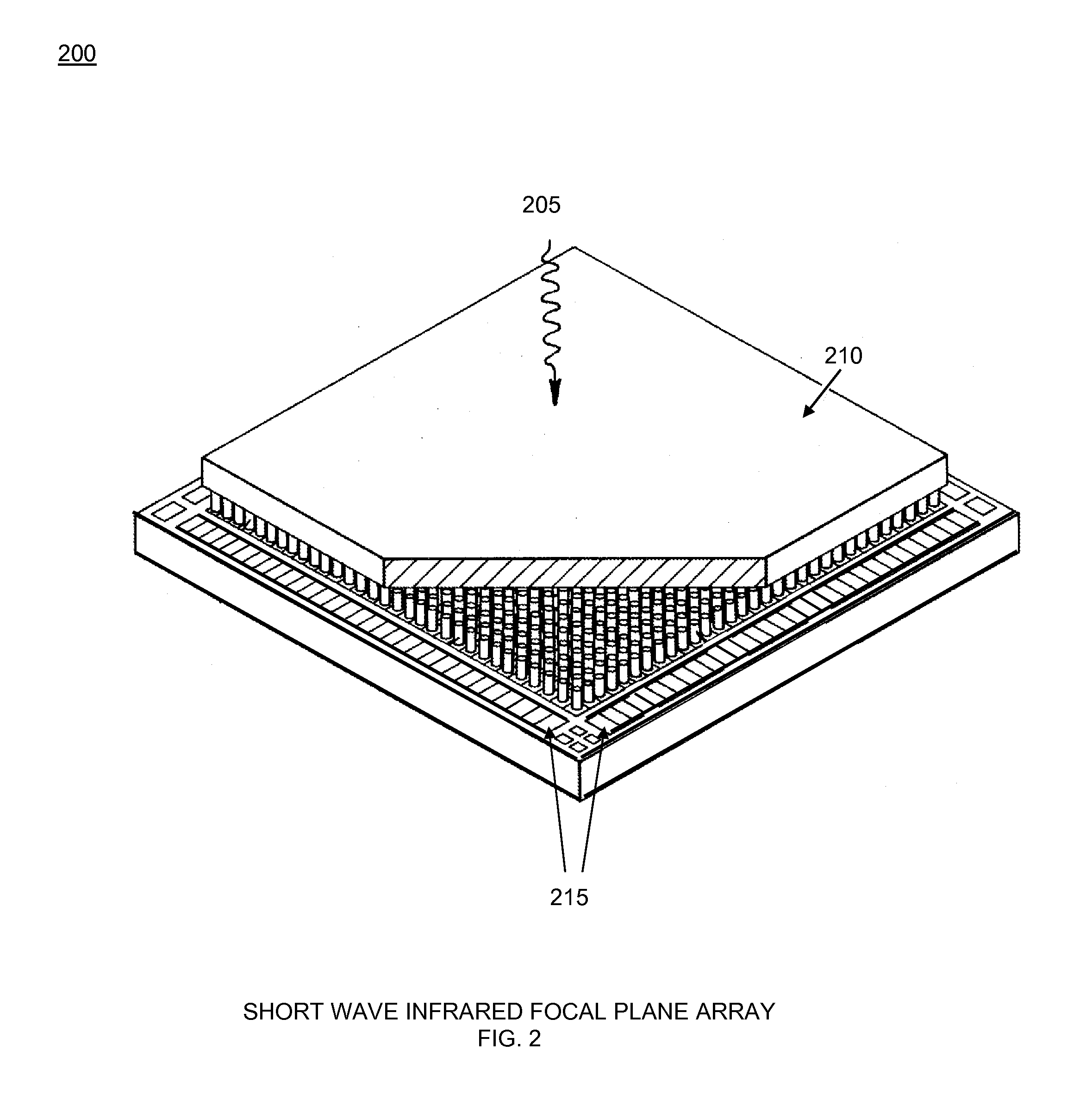Method for growing germanium/silicon-germanium superlattice
a technology of germanium and germanium, which is applied in the direction of crystal growth process, polycrystalline material growth, radiofrequency control device, etc., can solve the problems of high cost, incompatibility with silicon processing, and difficulty in growing single-crystal germanium on silicon substrates, etc., to reduce temperature and pressure, the effect of reducing the temperatur
- Summary
- Abstract
- Description
- Claims
- Application Information
AI Technical Summary
Benefits of technology
Problems solved by technology
Method used
Image
Examples
Embodiment Construction
[0010]The following detailed description provides example embodiments of the presently claimed invention with references to the accompanying drawings. The features and advantages described herein are not all-inclusive and, in particular, many additional features and advantages will be apparent to one of ordinary skill in the art in view of the drawings, specification, and claims. Moreover, it should be noted that the language used in the specification has been selected principally for readability and instructional purposes, and not to limit in any way the scope of the inventive subject matter. Embodiments are described in sufficient detail to enable one of ordinary skill in the art to practice the subject invention. The invention is susceptible of many embodiments. What follows is illustrative, but not exhaustive, of the scope of the invention.
[0011]Embodiments provide a method of growing a p-SLS-n stack for making vertical p-i-n photodetectors using an ultra-high vacuum-chemical va...
PUM
 Login to View More
Login to View More Abstract
Description
Claims
Application Information
 Login to View More
Login to View More - R&D
- Intellectual Property
- Life Sciences
- Materials
- Tech Scout
- Unparalleled Data Quality
- Higher Quality Content
- 60% Fewer Hallucinations
Browse by: Latest US Patents, China's latest patents, Technical Efficacy Thesaurus, Application Domain, Technology Topic, Popular Technical Reports.
© 2025 PatSnap. All rights reserved.Legal|Privacy policy|Modern Slavery Act Transparency Statement|Sitemap|About US| Contact US: help@patsnap.com



